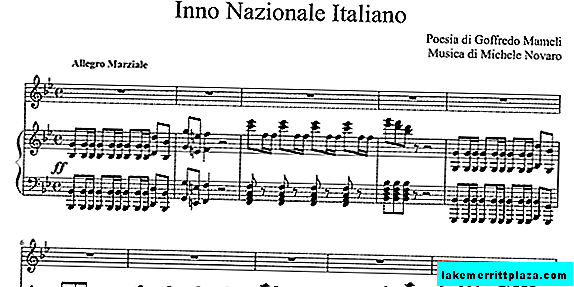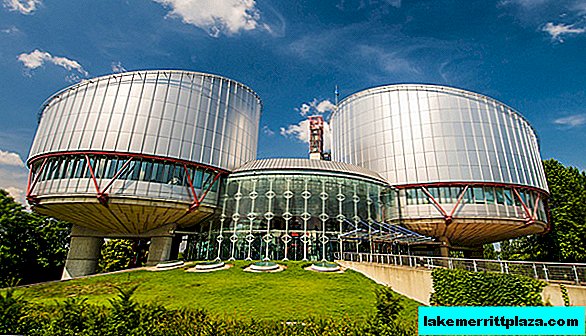Andrea del Verrocchio is an iconic personality, an outstanding Italian sculptor and Renaissance painter, who, thanks to his talent and inexhaustible industriousness, managed to leave a deep mark on world culture. His magnificent works have been recognized by both contemporaries and descendants.
The canvases and sculptures created by the master are included in the collections of many museums in Italy and other countries of the world, admiring the unusual manner of execution and the depth of the ideological concept.
Verrocchio Biographical Information and Workshop
Little is known about the personal life of Andrea del Verrocchio, whose real name was Andrea di Michele Cioni. It is known that he was born in Florence (Firenze), around 1435. In childhood and youth he was fond of music, showed a penchant for technical sciences, loved geometry and astronomy. The family of the future master did not belong to a noble family, but, thanks to his father, who worked as a craftsman, and later worked in the customs service of the city, he did not feel any special material need.
After the breadwinner’s early death, Andrea, 17, had to make a living on her own and provide food for some of her brothers and sisters. At the same time, a passion for art and an insatiable desire to create beautiful works determined the fate of the young man.
The creative path of young Andrea, like many famous artists and sculptors of the Renaissance, began with training and work in one of the jewelry workshops in Florence. There he was engaged not only in the manufacture of precious jewelry, but also learned the basics of painting, plastic and architecture. His first teacher was Giuliano Verrocci, whose last name Andrea borrowed in a slightly modified form for his future pseudonym.
A few years later, Andrea del Verrocchio founded his own art workshop, which was incredibly popular among the people of Florence. This place has become a source of versatile education and invaluable professional experience for a whole galaxy of young, promising artists and sculptors, future Renaissance titans. These included:
- Sandro Botticelli
- Pietro Perugino (Pietro Perugino);
- Domenico Ghirlandaio (Domenico Ghirlandaio);
- Lorenzo di Credi;
- Leonardo da Vinci
The workshop of Verrocchio reigned an atmosphere of endless love of art, science, philosophy and literature. In addition to studying the traditional ways of working with paints, metal, stone, plaster and leather, special attention was paid to exact disciplines and their practical application in painting and sculpture, disputes arose over the artistic value of certain works, ideas of humanism were discussed in detail, discussions were held about the ancient heritage .
Verrocchio gained deep respect and patronage of many influential citizens and patrons of Florence, receiving various orders from them. Representatives of the Medici clan showed particular interest in his creations, who at that time were the unspoken rulers of the republic. With great talent and resourcefulness Verrocchio managed to decorate the feasts of noble persons and the design of the court festivities.
Most of his life he lived and worked in his native city. At the end of the XV century he moved to Venice (Venezia), where he died at the age of 53 years, in 1488.
Sculptures and paintings - a special style of the master
In art circles, it is generally accepted that Verrocchio turned to painting no earlier than the 60s of the XV century. His paintings are devoted mainly to religious subjects.

The dominant place in the gospel stories, masterfully recreated by the artist, is the image of the Madonna (usually with the little Christ). In the works of Verrocchio, the Virgin Mary almost always appears as a sad virgin, filled with quiet sadness and humility. A distinctive feature of the style is the special aristocratic sophistication, the meticulousness of the transmission of details, the accuracy and sharpness of the picture, the spirituality and lyricism of the images. It is noteworthy that not all paintings, known as the works of Verrocchio, can be attributed with absolute accuracy the authorship of the Florentine artist.
The sculptural works clearly read the influence of ancient art and the creative heritage of such brilliant artists as Donatello, Antonio del Pollaiolo, Desiderio da Settignano. Verrocchio strove for perfection of forms and in many respects succeeded in this. The work of the sculptor, who was considered in his era the best connoisseur of metal, had a significant impact on the development of bronze cast plastic.
Christ baptism
The painting Baptism of Christ (Battesimo di Cristo) is recognized as the most famous work of the master, performed in collaboration with his student, the young Leonardo da Vinci in the 70s of the XV century. The plot is based on the canonical biblical scene from the Gospel of Matthew, often found on the canvases of painters of that era.

In the compositional solution, in which the central figure of the Savior, standing in the waters of the Jordan, is depicted, as well as in the image of John the Baptist, the characteristic features of medieval painting are traced. The characters do not have individuality, they rather fulfill the role of symbols, personifying majesty and deep spirituality. The movements seem constrained, lacking dynamism, postures look somewhat artificial. The background, reminiscent of not a landscape, but a decoration, is devoid of a sense of space and perspective. At the same time, the work is distinguished by a rich color palette and a variety of shades.
In the lower left corner of the picture is the figure of a little angel, dressed in a blue robe. Leonardo da Vinci was the author of this part of the work, performed (unlike the entire work) not by tempera but by oil paints.
Until 1530, the painting was in the church of San Salvi, in Florence, then it was transferred to the Uffizi Gallery (Galleria degli Uffizi), where it is exhibited today.
- I advise you to book an individual guide for a better understanding of the gallery exhibits.
David
An almost meter (125 cm) bronze statue of David, made with incredible technical skill, dates back to the 60-70s of the XV century. This sculptural work glorified Verrocchio and rightfully became considered the standard of Renaissance plastic. In the master’s work, the influence of Donatello and his statue of the young naked king, the victorious warrior created several decades earlier, can be clearly traced.

Verrocchio's sculpture is distinguished by grace, aristocracy, expressiveness and anatomical accuracy of the transmission of the forms of the human body. The biblical king, created by the sculptor, appears as a brave, triumphant young man, enjoying his victory over the defeated Goliath. His slender, beautiful body is dressed in closely fitting leather tunic. A relaxed posture, a half smile on the lips, a head turn - every detail tells about the hero’s deep satisfaction and self-confidence, and the severed powerful head of the giant, lying at the feet of a young warrior, eloquently emphasizes the value of the battle won.
There is a legend according to which it was Leonardo da Vinci who posed for Verrocchio, who worked on the statue of David, but it is not possible to prove the reliability of this legend.
The sculptural work was commissioned by the Medici family and was originally intended to serve as a decoration for Villa Careggi, after which the statue was transferred to the Palazzo Vecchio, where the Florentine Signoria was located, and in 1777 the master's work came to the Uffizi Gallery. Currently, Verrocchio’s magnificent statue is included in the treasures of the National Museum of Bargello (Museo Nazionale del Bargello).
- I advise you to read about David Michelangelo
Assurance Thomas
The monumental work of Christ and St. Thomas, in art historian circles, it is also called the Unbelief (or Assurance) of St. Thomas (Incredulita di san Tommaso) was performed in the 60-80 years of the XV century.
The sculpture group was originally installed in one of 14 niches that adorned the outer walls of the Orsanmichele church in Florence, now it is replaced by a copy, and the original, which underwent a large-scale restoration at the end of the last century, is stored in the walls of the museum of the same name located at the temple.
The image of the Savior plays a dominant role, the holy apostle stands on the left, his figure extends beyond the niche, but the unity of the lines of flowing robes, the spirituality of gestures and deep drama on the faces of the heroes give rise to a feeling of absolute artistic integrity and completeness of the work. Such a compositional solution of facade sculpture was a real innovation for the art of that era.








